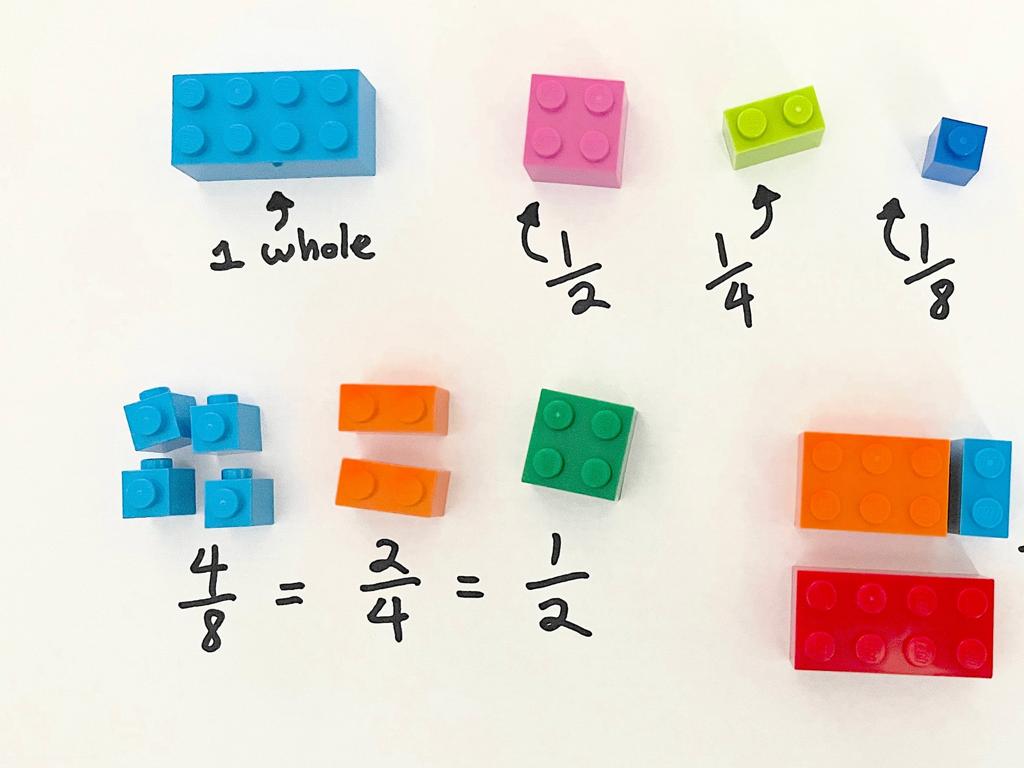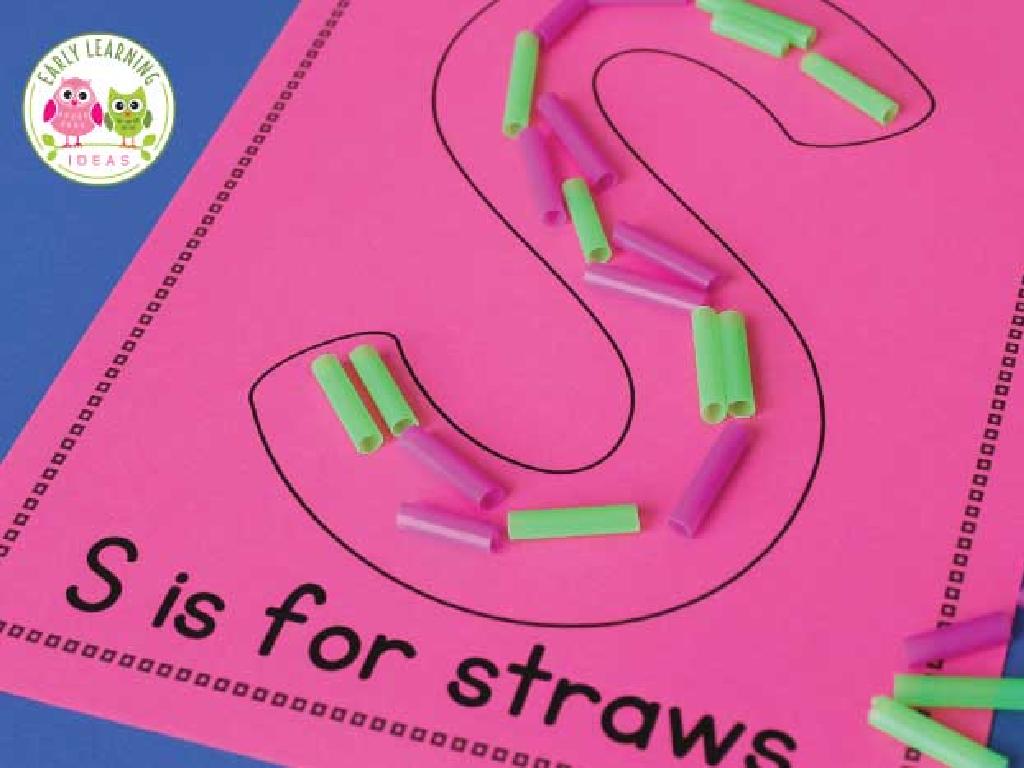Match Plants To Their Parents
Subject: Science
Grade: First grade
Topic: Plants
Please LOG IN to download the presentation. Access is available to registered users only.
View More Content
Welcome to the World of Plants!
– Today’s learning: Plants!
– Naming plants we know
– Think about plants at home, school, or park
– Baby plants & parent plants
– Just like you resemble your parents, baby plants resemble their parent plants
– Observing plant family traits
– We’ll look at how baby plants inherit traits like leaf shape and flower color from their parents
|
This slide is designed to introduce first graders to the concept of heredity in plants. Start the class by engaging the students with the question about plants they’ve seen to make them feel involved. Explain that plants have families too, and baby plants inherit features from their parent plants. Use simple language and relatable examples, such as comparing how children look like their parents, to help them understand the concept of inheritance in plants. Prepare to show them real-life examples or illustrations of plants with distinct traits that are passed on to their offspring, such as the shape of leaves, type of flowers, or color of the fruits.
What Are Parent Plants?
– Plants have families like animals
– A parent plant is fully grown
– Think of it like a big tree in the park
– Parent plants make seeds
– These seeds can be in fruits like apples
– Seeds grow into baby plants
– Like how an apple seed becomes an apple tree
|
This slide introduces the concept of parent plants to first graders, emphasizing the idea that plants, much like animals, have family structures. Explain that a parent plant is a mature plant, often large and fully developed, which is capable of producing seeds. These seeds are the offspring of the plant and can grow into new plants, continuing the cycle of life. Use familiar examples, such as apple trees, to illustrate the concept of seeds growing into new plants. Encourage the children to think of other examples of seeds and to observe plants in their environment to see if they can identify parent plants and their seeds.
Meet the Baby Plants!
– Baby plants are called seedlings
– Just like you were once a baby, plants start small too!
– Seeds are the start of a plant’s life
– Every seed holds a tiny plant inside that needs soil, water, and sun to grow.
– Seedlings grow into adult plants
– As seedlings get bigger, they start to look more like their parent plants.
– Matching seedlings to their parents
– We’ll see if we can tell which big plant a little seedling will grow into!
|
This slide introduces the concept of plant life cycles to first graders by comparing baby plants (seedlings) to human babies, making it relatable. Explain that all plants start from seeds and grow into seedlings, which are the baby version of plants. Show pictures of various seedlings next to their parent plants and engage the students in a matching activity. Encourage them to observe the similarities between the seedlings and the adult plants to make correct matches. This activity will help them understand the growth process of plants and recognize the characteristics of different plant species.
Matching Game: Plant Parents and Their Seedlings
– Play a game to match plants
– Leaves are clue-givers
– Leaves shape, size, and color help us guess the parent plant
– Consider plant size and shape
– Big plants can have big or small seedlings, and the same goes for small plants
– Match seedlings to parent plants
|
This slide introduces a fun and interactive game for first graders to learn about plant heredity by matching seedlings to their parent plants. Encourage the students to observe the leaves of both the seedlings and the mature plants, as they often share similar characteristics that can help in the matching process. Discuss with them how the size and shape of a plant can change as it grows, but there are still similarities that can be spotted. For the activity, provide various pictures of seedlings and mature plants and let the students work in groups to make matches. Offer guidance and confirm correct matches to reinforce learning. This activity will help students understand that plants, like humans, have offspring that share traits with their parents.
How Plants Grow Up
– Plants start as tiny seedlings
– Just like you, plants start small and grow big!
– They need soil, water, and sunlight
– These are like food and drink for plants
– A seed’s journey to a big plant
– We’ll explore how a seed transforms into a mature plant
|
This slide introduces the concept of plant growth to first graders. Begin by explaining that all plants start life as small seeds and grow up to become big plants, similar to how children grow up. Emphasize the importance of soil, water, and sunlight for plant growth, drawing parallels to how children need food, water, and care to grow. Use the transformation of a seed into a plant as a storytelling opportunity to captivate the students’ imagination. Encourage them to think about how they have grown and relate it to how plants grow. This will help them understand the life cycle of plants and recognize the similarities between living organisms.
Class Activity: Planting Our Seeds!
– Time to grow our own plants
– Plant seeds in soil pots
– Each student will have a small pot with soil to plant seeds
– Water them regularly
– Make sure to water a little every day
– Give them love and care
– Talk to your plants and watch them grow!
|
This activity is designed to give students hands-on experience with plant growth and care. Provide each student with a small pot, soil, and seeds. Guide them through the process of planting the seeds and cover the basics of plant care, including watering and the importance of sunlight. Encourage students to observe the changes daily and make it a class routine to care for their plants. This will not only teach them about plant biology but also responsibility and the conditions necessary for life. Possible variations of the activity could include using different types of seeds to observe variations in growth or having students measure their plants’ growth each week.
Plant Growth: From Seed to Parent Plant
– Celebrating our plant matching
– Plants grow from seeds
– Just like you, plants start small and grow big!
– Caring for your seedling
– Water it, give it light, and keep it warm
– Watching seeds become like parents
– Observe changes as your plant grows up
|
This slide concludes our lesson on matching baby plants to their parent plants. Reinforce the concept that all plants start as seeds and grow into adult plants, just like humans grow from babies into adults. Encourage the students to take responsibility for their own seedlings, providing them with water, light, and warmth, and to observe the growth process. This will help them understand the life cycle of plants and the care that living things need to grow. Celebrate the students’ success in matching plants and instill excitement for the ongoing observation of their seedlings’ growth.






